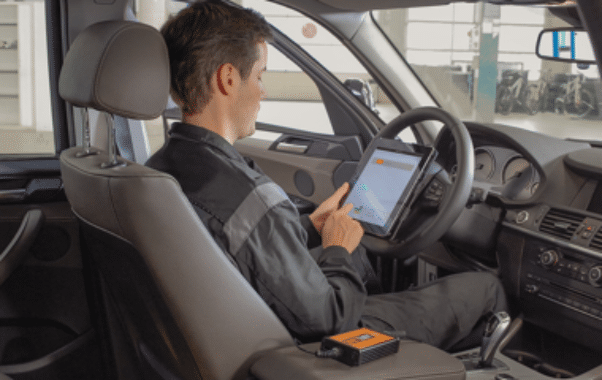
Buy
There are several ways to purchase the towbar and wiring kit of your choice. Consult your local garage and ask for a Brink towbar.
Purchasing a towbar and wiring kit can cost hundreds of pounds. You may wonder why you have to pay so much? The costs mostly cover the technical development, testing and production of the towbar.
A team of engineers brings every new car model to the workshop of our headquarters in Staphorst, The Netherlands. There, the rear and underside of the car, with and without the bumper, is scanned in 3D with the help of a laser measuring arm. R&D then draws a 3D towbar on the basis of these precise 3D scans, using the most advanced industrial drawing programmes, such as CAD. Next, every separate component of the towbar is designed: side plates, electrical socket plate, ball, housing, crossbar, bearings and locking mechanism.

During the design phase, R&D focuses on several principles. The basis of these principles are the mounting points on the chassis of the car and the maximum towing weight and axle load (as specified by the car manufacturer), the legally required height (measured from the ground up, 35 to 42 centimetres in maximum load), and the legally required space between the bumper and the bodywork (at least 65 millimetres to the centre of the ball). In addition, the purpose is to create the towbar with the least possible and lightest possible materials. As for appearance, the towbar needs to match the design of the car model. The goal is to leave the design intact by creating an invisible solution. If possible, we aim to prevent having to disassemble or cut into the bumper during the installation.
With the help of the CAD FEM calculation programme, we run the design through a computation that provides insight in the external force pressure and the resulting material tension and distortion. Using a colour system, issues such as strength, stiffness, fatigue, distortion and more is shown on the screen. Thanks to this extensive process we create a final design of a towbar that perfectly matches the car model on which it will eventually be mounted.
Brink produces a towbar from the 3D drawing, which is subjected to quality testing in our own advanced test centre, including being exposed to the most extreme circumstances in order to measure safety, sustainability and strength. Only if the towbar has passed all tests and meets all international standards is it added to production.

During production, a towbar goes through over 40 different steps, from creating a model, bending the ball to welding the different pieces together. Manufacturing one towbar takes about five to seven weeks.
A wiring kit to match the towbar has to be developed, tested and produced as well. As the newest cars have been equipped with the latest techniques and functionalities, there is a complex process to ensure the vehicle and trailer communicates efficiently. This takes a lot of time as well, which affects the cost of the installation.

There are several ways to purchase the towbar and wiring kit of your choice. Consult your local garage and ask for a Brink towbar.

If you are purchasing a towbar, you always need to buy a matching wiring kit as well. This ensures that your bike carrier, trailer, caravan, boat trailer or horsebox is powered and has lighting. You can read more about the various wiring kits here.